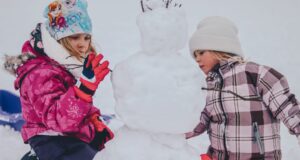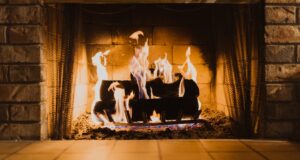 Winter is a season that presents photographers with a unique canvas of beauty and tranquility. The serene landscapes, pristine snowscapes, and soft natural light offer endless opportunities for capturing the magic of the season through the lens. In this blog post, we’ll share expert tips on how to photograph the captivating beauty of winter landscapes. We’ll delve into techniques for exposing, framing, and lighting winter scenes, provide recommendations for camera settings and equipment suitable for different winter photography scenarios, and showcase our own winter photography examples to inspire your creativity.
Winter is a season that presents photographers with a unique canvas of beauty and tranquility. The serene landscapes, pristine snowscapes, and soft natural light offer endless opportunities for capturing the magic of the season through the lens. In this blog post, we’ll share expert tips on how to photograph the captivating beauty of winter landscapes. We’ll delve into techniques for exposing, framing, and lighting winter scenes, provide recommendations for camera settings and equipment suitable for different winter photography scenarios, and showcase our own winter photography examples to inspire your creativity.
Capturing Winter Landscapes:
Photographing winter landscapes requires a keen eye and an understanding of how to showcase the unique qualities of the season:
- Framing with Natural Elements: Winter scenes can be beautifully framed with overhanging tree branches, creating a sense of depth and a captivating focal point. For example, capturing a snow-covered path through an archway of trees can add an enchanting quality to your photo.
- Exposing for Snow: Snow can be challenging to photograph due to its brightness. Use exposure compensation to avoid overexposure, keeping the details in the snow. Adjust your camera settings to slightly underexpose to retain texture and nuance in the white landscape.
- Creating Compelling Compositions: Compose your shots with intention. Look for leading lines formed by footprints in the snow or the shape of a frozen stream. Use the rule of thirds to create balance and visual interest. Consider framing the shot with natural elements like evergreen trees or frost-covered branches to add depth to your composition.
Camera Settings and Equipment:
Winter photography often requires specific settings and equipment to capture the best shots:
- Stabilize with a Tripod: Winter conditions can be challenging, with cold hands and windy days. Using a tripod ensures that your shots are steady, even in these conditions. It’s essential for capturing sharp and clear images.
- Adjusting Shutter Speed: When photographing falling snowflakes or icicles, experiment with slower shutter speeds to capture their motion. This can create a dreamy, ethereal effect. Use a tripod to avoid camera shake when working with slow shutter speeds.
- Lenses for Different Shots: Consider the type of shots you want to capture. Wide-angle lenses are great for sweeping landscapes, while macro lenses are ideal for capturing intricate frost patterns on windows or close-ups of snowflakes.
Inspiration from Our Work:
To inspire your winter photography journey, we’re sharing some of our own winter photography examples:
- Serene Winter Forest: A photograph of a snow-covered forest, with a path leading into the distance. The image captures the quiet beauty of a winter landscape, with the overhanging tree branches adding depth and framing the scene.
- Frost Patterns on a Window: Close-up shots of intricate frost patterns on a window pane, highlighting the delicate and fascinating details of winter.
- Snowfall at Dusk: A captivating shot of snowflakes falling against the backdrop of a dusky winter sky. The soft lighting and the motion of the snowflakes create a sense of wonder.
These examples illustrate the artistry and opportunities that winter photography offers. Use them as a source of inspiration for your own winter photography adventures.
This detailed information provides a comprehensive overview of the final point. If you have specific requests or need further assistance, please let me know.
 TeluguNow.com Telugu cinema news, Movie reviews, Telugu Movies Updates, OTT News, OTT Release dates, Latest Movie reviews in Telugu, Swathi weekly, Telugu cinema reviews, telugu movie reviews, Telugu Actress Photos, Telugu Movie HQ Photos, Tollywood, Box office collections, Telugu Movie show times, Theater List, telugu cinema tickets
TeluguNow.com Telugu cinema news, Movie reviews, Telugu Movies Updates, OTT News, OTT Release dates, Latest Movie reviews in Telugu, Swathi weekly, Telugu cinema reviews, telugu movie reviews, Telugu Actress Photos, Telugu Movie HQ Photos, Tollywood, Box office collections, Telugu Movie show times, Theater List, telugu cinema tickets



